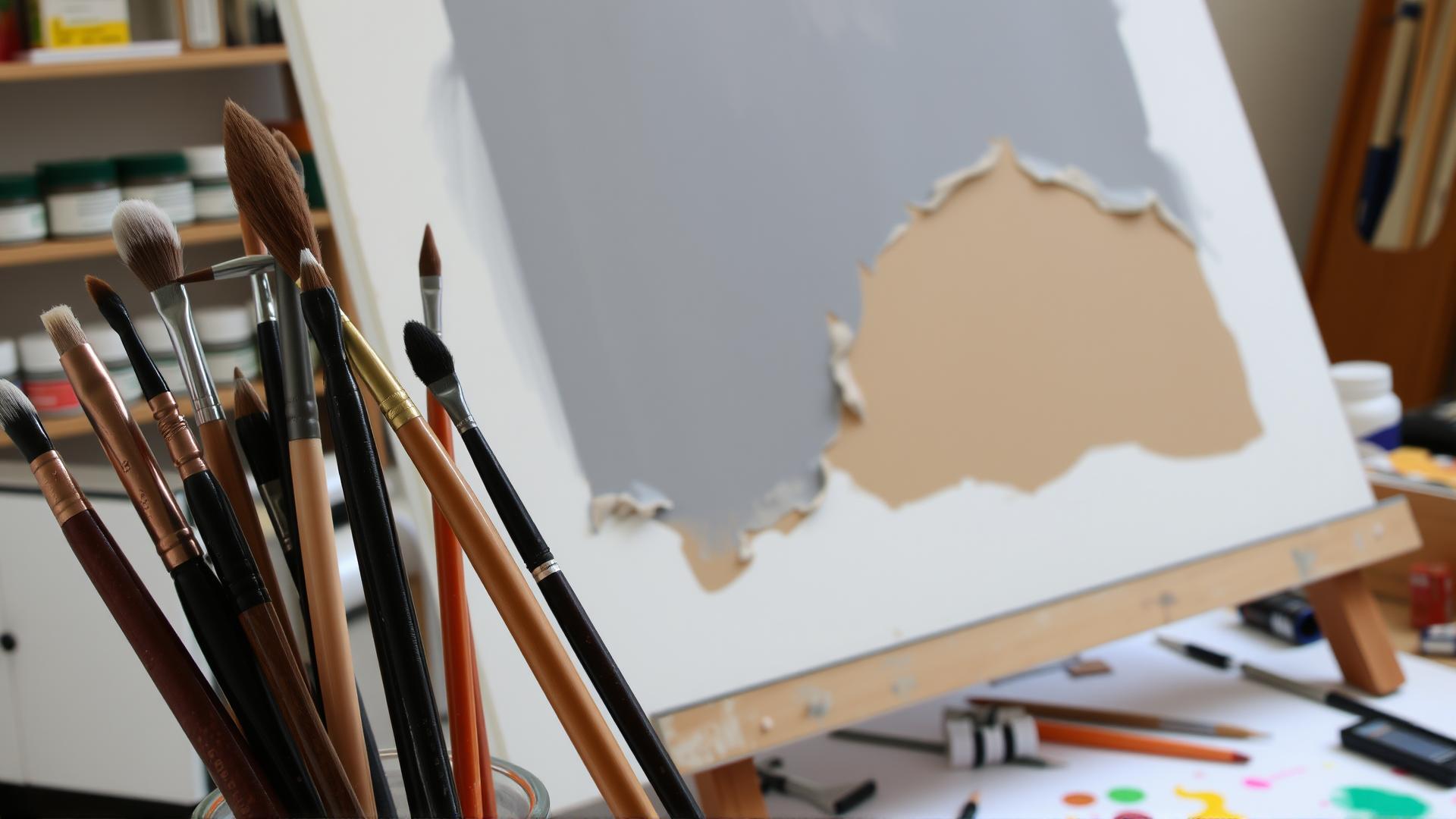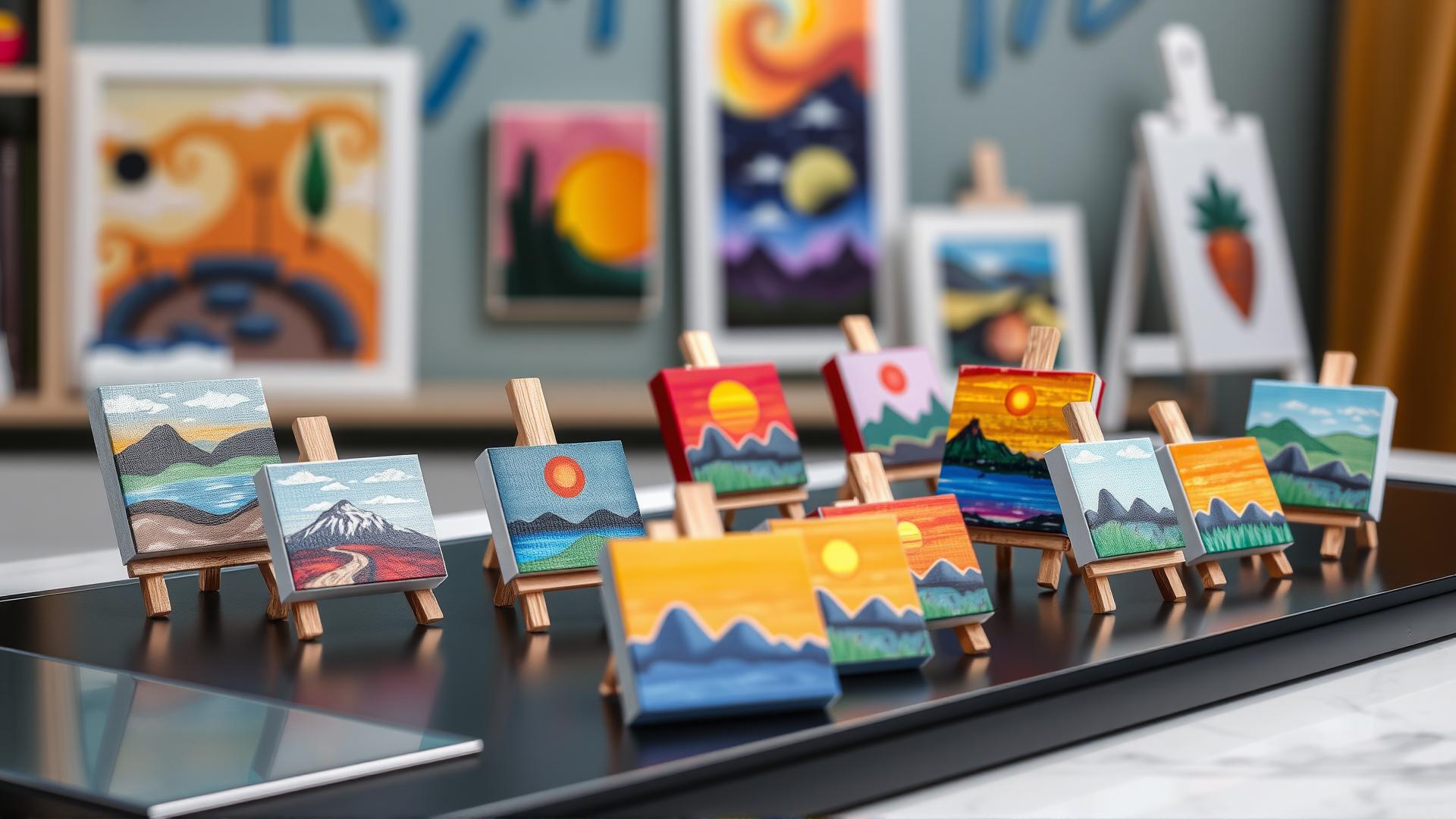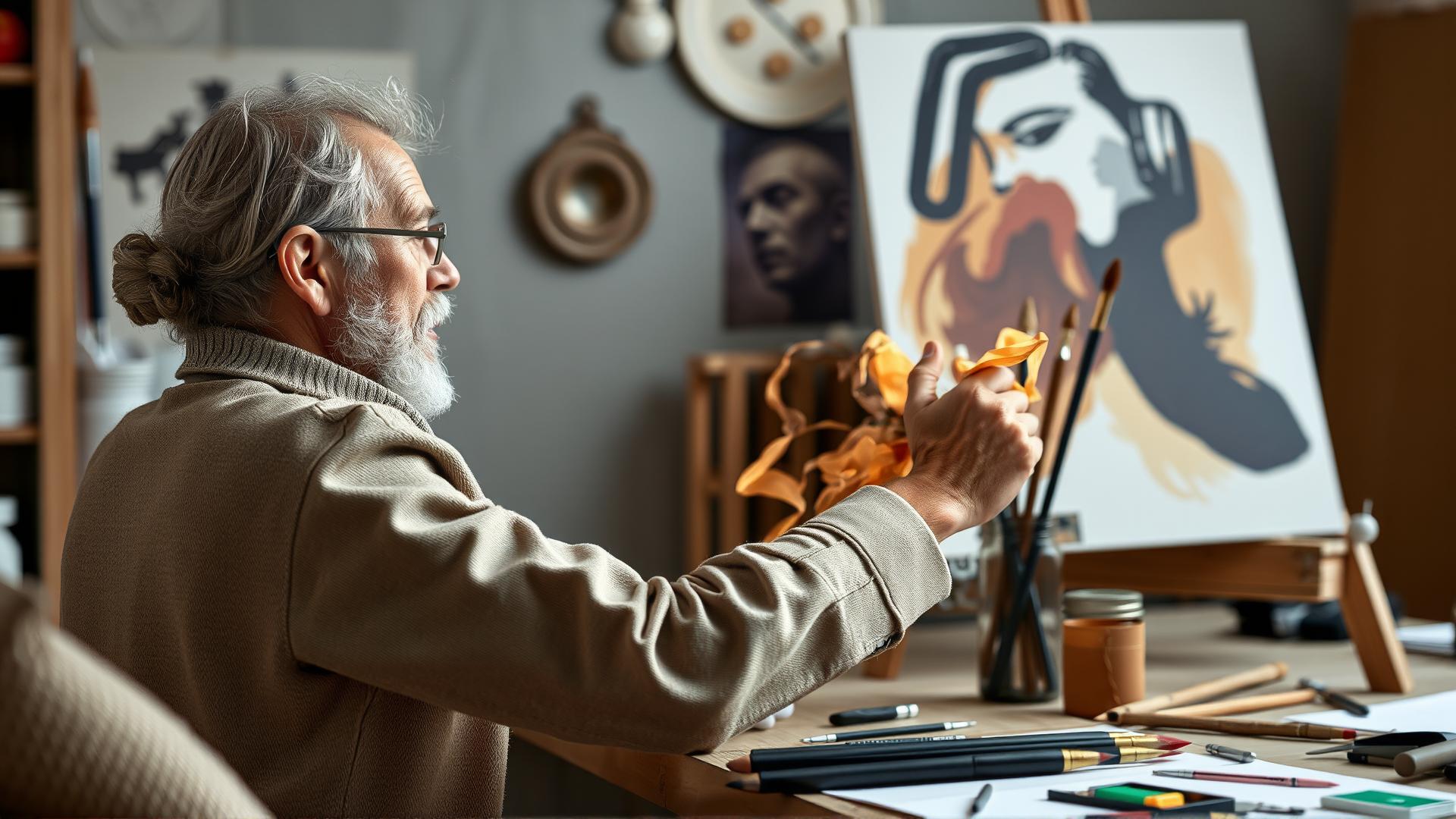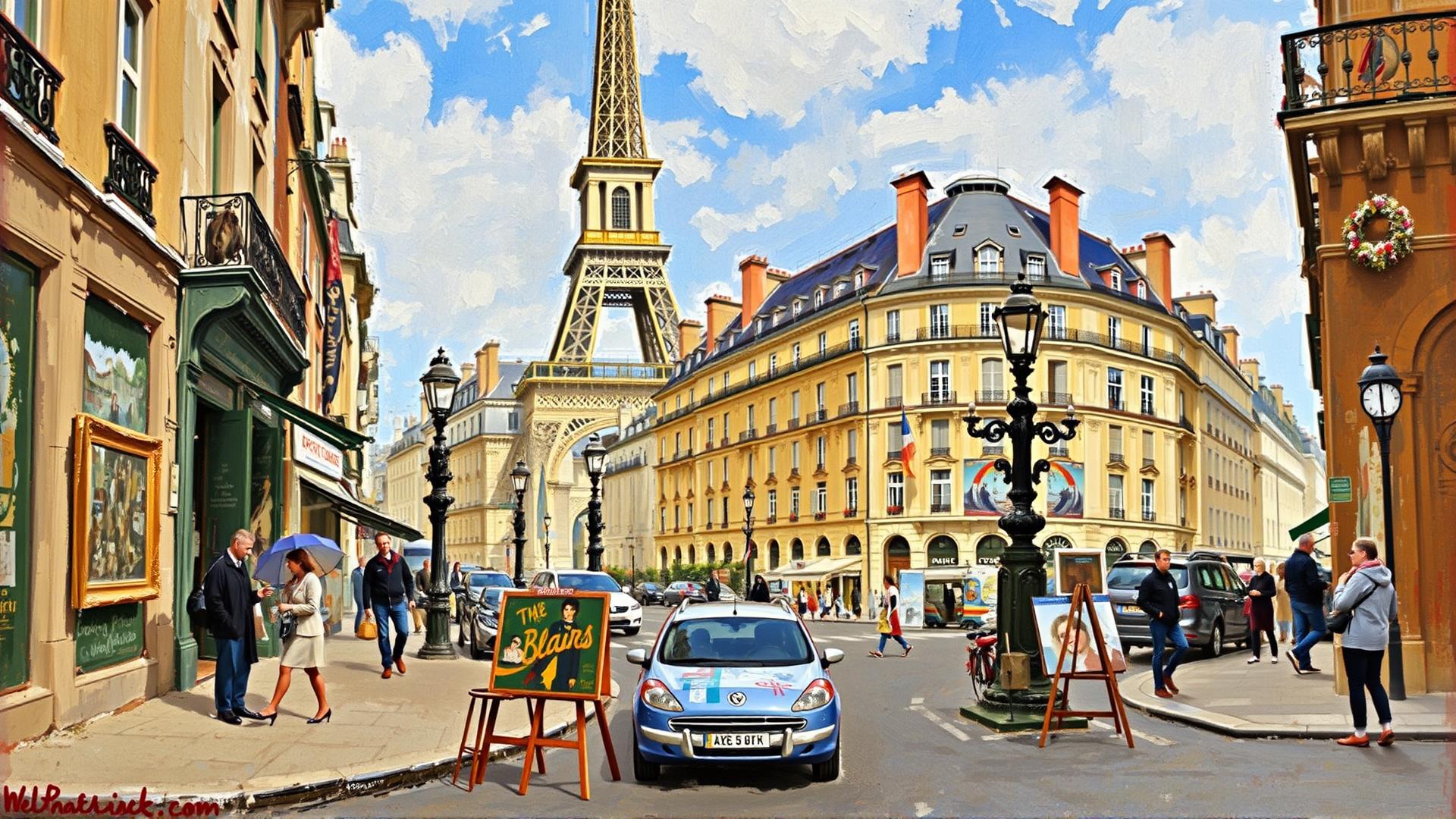Introduction
Modern Impressionism is a captivating art movement that revitalizes the principles of its predecessor, traditional Impressionism, while infusing it with contemporary techniques and themes. Emerging in the late 20th century, this movement embraces the vivid use of color, dynamic brushwork, and an emphasis on capturing light and its effects as experienced in real time. Unlike the original Impressionists who painted primarily outdoor scenes, modern interpreters may draw inspiration from urban life, fashion, and abstract forms, pushing boundaries while maintaining the core tenets of vibrancy and emotional expression.
The impact of Modern Impressionism is profound, resonating through various forms of art today. Artists aim to evoke feelings and moods rather than strictly represent reality, bringing an exciting freshness to the canvas. This article explores the dynamics behind this vibrant movement, shedding light on its key artists, techniques, and the continuous evolution of impressionistic principles in the modern context.
The Foundations of Impressionism Origins and Revolutionary Shifts
The roots of Impressionism trace back to the mid-19th century in France, a period characterized by rapid societal changes and advancements in the perception of art. This movement emerged as a response to the rigid constraints of academic painting, prioritizing a new approach that emphasized spontaneity and the effects of light. Impressionism’s core characteristics included a focus on daily life, natural scenes, and an innovative use of color to capture the fleeting moments of time. Artists such as Claude Monet, Pierre-Auguste Renoir, and Édouard Manet sought to convey a sense of immediacy through bold brushstrokes and vibrant color palettes, which were revolutionary for that era.
The shift from traditional techniques to the Impressionistic style was marked by a departure from detailed realism towards a more subjective interpretation of a scene. Artists began to paint en plein air, or outdoors, allowing them to genuinely capture the atmosphere and light conditions of their surroundings. This practice resulted in works that seemed alive with color and movement, reflecting an authentic moment rather than attempting to impose order through meticulous detailing. The iconic Impression, Sunrise by Monet, for instance, does not focus on the precise outlines of boats or the sky, but rather on the ethereal play of light and color.
Impressionism also introduced the idea of “color theory” into the artistic lexicon. Artists blended colors directly on the canvas instead of relying on the traditional mixing on palettes, which allowed for a higher saturation of hues and a more complex interplay of light and shadow. This exploration of color relationships laid the groundwork for future movements, including Modern Impressionism.
Critics of the time often derided the Impressionists for their seemingly incomplete works, dismissing them as mere sketches. However, this reinterpretation of the aesthetic experience challenged the public’s perception of what constituted “fine art.” The movement’s informal and innovative techniques encouraged artists to break free from conventions, ultimately paving the way for various experimental styles that would define Modern Impressionism and beyond. The legacy of Impressionism remains palpable today, serving as a critical reference point for understanding the evolution of art as a reflection of both personal experience and objective reality.
PostImpressionism and Its Influence Analyzing the Bridge to Modern Impressionism
Redefining Color and Form
Post-Impressionism emerged as a pivotal movement in the late 19th century, serving as a transitional phase between the fleeting impressions captured by Impressionism and the expressive explorations of Modern Impressionism. While Impressionists endeavored to capture the essence of a moment through light and color, Post-Impressionists expanded on this foundation, delving into the emotional and symbolic dimensions of their subjects. This shift laid the groundwork for a broader exploration of artistic expression.
One of the hallmark traits of Post-Impressionism was its emphasis on structured forms and vivid color palettes. Artists such as Vincent van Gogh and Paul Cézanne redefined the application of color, opting for bolder tones that evoked emotion rather than merely replicated the natural world. Van Gogh’s dynamic brushwork and intense hues conveyed feelings of urgency and passion, while Cézanne’s analytical approach to form introduced a new way of interpreting perspective and volume, breaking away from traditional representational approaches.
This redefinition of color and form highlighted a significant departure from the Impressionistic focus on capturing the ephemeral nature of light. Instead, these artists employed color as a means of conveying emotional depth and personal experience. This practice not only expanded the possibilities of color use but also laid the groundwork for subsequent movements, including Fauvism and Expressionism, which would further challenge conventional artistic boundaries.
The Legacy of Post-Impressionism in Modern Interpretations
The legacy of Post-Impressionism is profoundly visible in the evolution of Modern Impressionism. As contemporary artists embraced the lessons of their Post-Impressionist predecessors, they began to prioritize individual expression and subjective experience in their work. This embrace of personal vision allowed for a more diverse range of artistic interpretations, reflecting the complexities of modern life. Innovations in materials and techniques further contributed to this dynamic evolution, as artists experimented with new mediums such as acrylics and digital art.
The transition from Post-Impressionism into Modern Impressionism represents a broader cultural shift, where artists began to explore identity, culture, and narrative, reflecting the changing times of the 20th and 21st centuries. By merging the emotive and the representational, Modern Impressionists continue to draw inspiration from the groundwork laid by Post-Impressionists, forging a vibrant artistic path that celebrates both individual expression and universal themes.
Defining Modern Impressionism Distinguishing Features and Cultural Influences
Modern Impressionism can be understood as a contemporary articulation of the Impressionist movement that emerged in the late 19th century. While it retains some of the core tenets of Impressionism, it distinguishes itself through a variety of features that resonate with today’s societal context. One of the most apparent characteristics is the emphasis on personal expression and subjective perception. Unlike its predecessors, who often adhered to the notion of capturing fleeting moments in an objective manner, modern artists focus on the individual experience of the moment, interpreting their surroundings with a unique lens.
Color plays a pivotal role in Modern Impressionism, evolving from the light-refracting palettes of the original Impressionists to more vibrant and unconventional combinations. This divergence often includes bold strokes and unexpected hues, which serve to evoke emotion rather than merely mimic reality. The brushwork in Modern Impressionism also exhibits a dynamism that reflects contemporary life, encapsulating movement and energy in every stroke. Artists utilize techniques that allow for more abstraction, encouraging viewers to engage with the work on a personal level, fostering a dialogue that transcends the visual.
Cultural movements such as Abstract Expressionism, Fauvism, and even street art have significantly influenced the evolution of Modern Impressionism. The spirit of experimentation promoted by these movements has inspired contemporary artists to break boundaries and challenge conventional aesthetics. The infusion of new media, technology, and social commentary has also shaped modern interpretations. Artists now incorporate elements such as digital art, installation, and performance, blending genres that expand the traditional definition of painting.
Societal themes such as identity, climate change, and urban life resonate powerfully in the works of modern Impressionists. The depiction of everyday life is reimagined through the lens of personal narratives, embracing themes that reflect the complexities of contemporary existence. This interplay between personal and societal narratives is one of the distinguishing features of Modern Impressionism, differentiating it from its historical counterparts.
In contrast to the Impressionist dedication to tranquility and pastoral beauty, Modern Impressionism often confronts the chaos and vibrancy of the present day. Consequently, this artistic movement serves not only as a reflection of our world but also as a catalyst for dialogue, pushing the boundaries of visual representation in ways that provoke, challenge, and inspire.
Key Figures in Modern Impressionism
Contemporary Artists Defining the Movement
Modern Impressionism has seen a resurgence and transformation through the creative contributions of contemporary artists. These individuals masterfully embody the essence of this dynamic art form, blending traditional techniques with modern themes and sensibilities. They are not just preserving the heritage of Impressionism but are also reshaping it, making it relevant in today’s art scene.
One of the leading figures in this movement is Philip O’Connor, whose work resonates with the vigorous brushstrokes and vivid palettes characteristic of Impressionism. O’Connor’s paintings often explore the interplay between light and atmosphere, capturing fleeting moments in urban landscapes. His ability to combine spontaneity with meticulous observation invites viewers into his vibrant representation of contemporary life. This artistic dialogue reinvents Impressionism, serving as a bridge between its historical confines and the narratives of modern existence.
Another prominent artist is SCOTT REDFORD, known for his ability to meld Impressionist qualities with contemporary themes, particularly in the realm of social issues and environmental awareness. His artwork frequently addresses themes of sustainability and climate change, transforming natural landscapes into platforms for dialogue. Redford’s expressive handling of color not only conveys emotion but also echoes the contemporary urgency of the issues he highlights, making him a critical figure in the modern Impressionist conversation.
A notable mention is Katherine Tzu-Lan Mann, whose focus on the natural world balances Impressionist technique with a modern aesthetic. Her layered use of color and texture draws the viewer’s eye to details often overlooked, urging a deeper contemplation of the ecology that surrounds us. Mann’s work invites an examination of the relationship between humans and nature, echoing the Impressionist movement’s original intent to capture life as it unfolds, albeit with a modern twist.
These artists, along with many others, strengthen the fabric of Modern Impressionism. Their works reflect personal narratives and collective experiences, showcasing how this art form continues to import insights into the human experience. By marrying past techniques with contemporary themes, they have ensured that Modern Impressionism remains a vibrant and relevant force within the broader art world.
The Role of Technology in Modern Impressionism
Influence of Digital Tools on Artistic Creation
The integration of technology in modern art has ushered in a transformative approach to creating and experiencing Modern Impressionism. Artists today are utilizing a range of digital tools, such as graphic tablets, software programs, and augmented reality applications, which grant them unprecedented flexibility and control over their creative process. These tools allow for the rapid experimentation of colors, forms, and textures that were once constrained by traditional mediums.
One significant advancement is the emergence of digital painting software like Adobe Photoshop and Procreate. These platforms enable artists to simulate traditional brush strokes and layering techniques while offering the added benefit of undo functions and countless brushes. Such capabilities encourage artists to refine their works in real time, ultimately generating compositions that reflect the spontaneous essence of traditional impressionism while being rooted in modern technology.
Online Sharing and Community Engagement
Beyond creation, technology has drastically altered how art is shared and consumed. Social media platforms like Instagram and Pinterest serve as virtual galleries, allowing artists to showcase their work to a global audience. This democratization of art promotes a vibrant community where feedback flows between artists and viewers, fostering collaboration and inspiration across geographical boundaries.
Artists are now able to engage directly with their audience, cultivating a sense of connection that transcends the traditional gallery experience. Many contemporary impressionists utilize these platforms not only for promotion but also as an informal sketchbook, sharing works in progress and inviting their followers into their artistic journey. Such transparency enhances anticipation for the final product and creates a dialogue that informs future pieces.
The rise of virtual galleries and online exhibitions has further expanded the reach of Modern Impressionism. Artists can now host interactive online viewings, allowing viewers to experience their work from the comfort of their homes. This shift towards digital showcases enables communities that may not have access to local galleries to appreciate and support modern impressionist art.
The intersection of technology and Modern Impressionism is a dynamic evolution of the art form, fostering creativity and accessibility. As these trends unfold, they will no doubt play a pivotal role in shaping the future of artistic expression and community engagement in the ever-globalizing art world.
The Globalization of Impressionism Modern Interpretations Across Cultures
Transcending Boundaries
The modern impressionist movement has achieved a remarkable journey, transcending geographical boundaries and infiltrating a multitude of cultures, each adapting the principles of this iconic style in their unique artistic expressions. Originally rooted in 19th-century France, impressionism captured the fleeting effects of light and movement, later evolving into interpretations that mirror the complexities of a globalized world. Artists from diverse backgrounds have embraced the spontaneity and emotional resonance of modern impressionism, blending traditional techniques with local themes, materials, and narratives.
One of the most striking aspects of modern impressionism is its adaptability. In Asia, for instance, contemporary artists have integrated traditional Eastern aesthetics with impressionist techniques. Japanese painters have explored vibrant color palettes and brush strokes reminiscent of their heritage, all while evoking the ambience and texture characteristic of impressionism. Similarly, in Latin America, artists incorporate elements of folk art, engaging with narrative and social issues, which hark back to local histories while employing the evocative abstraction of impressionism.
Diverse Cultural Expressions
The blending of modern impressionism with local artistic traditions results in fresh and vibrant cultural expressions. In Africa, the movement has found new life through vibrant colors and motifs embedded in local folklore and experiences. This synthesis of styles has produced artworks that not only resonate with a global audience but also carry the weight of local significance, expressing collective memories and identities.
In the digital age, the globalization of impressionism has accelerated through social media platforms and online galleries, allowing artists to communicate and exhibit their works to a worldwide audience. The use of technology means that modern impressionist pieces can cross borders with unprecedented speed, fostering collaboration among artists globally. Projects that exhibit works from various countries alongside their commentary on global issues reflect a collective narrative shaped by local influences and experiences.
As contemporary society becomes increasingly interconnected, modern impressionism’s evolution will likely continue to thrive through this cross-pollination of ideas and styles. Artists will push the boundaries further, reflecting a world that is diversely united, while honoring the rich heritage of impressionism. This elucidation of cultural interchange through art demonstrates how powerful and relevant modern impressionism remains in today’s art landscape, paving the way for future innovations in this timeless genre.
Future Trends in Modern Impressionism
Anticipating the Path Forward
Moving forward the trajectory of Modern Impressionism reveals an intriguing juxtaposition between tradition and innovation. As artists navigate the complexities of contemporary society, they are reimagining the essential values and techniques of Impressionism. The future of this art form appears to be characterized by an increasing embrace of technology and a focus on social commentary, which is reshaping the genre in striking ways.
One significant trend is the integration of digital media into the artistic process. Artists are exploring virtual reality, digital painting, and augmented reality, offering immersive experiences that echo the sensory immediacy found in traditional Impressionist works. This blending of mediums allows for the creation of layered narratives, where brushstrokes can coexist with digital effects, ultimately broadening the scope of expression. Exhibitions that incorporate these technologies are not only expanding audience engagement but also raising profound questions about authenticity and the nature of art itself.
The global cultural climate is pushing artists toward a renewed focus on societal issues. Modern Impressionism has often captured fleeting moments, yet contemporary artists are increasingly using their works to address pressing themes such as climate change, identity, and social justice. This sociopolitical awareness aligns with a broader movement within the art world that seeks to merge aesthetics with advocacy, creating art that serves as a catalyst for dialogue and change.
With the rise of social media is reconfiguring how art is consumed and appreciated. With platforms like Instagram and TikTok, artists can build their brands and directly interact with audiences. This democratization of exposure is transforming the traditional gallery model, giving rise to a new generation of Impresionists who prioritize accessibility and community over exclusivity. Future works may increasingly reflect this shift, blending individual artistic voices with collective experiences shaped by digital interactions.
The future of Modern Impressionism is likely to be a vibrant tapestry of technological innovation and critical engagement with the world. As artists continue to experiment with new forms and challenge conventional narratives, the legacy of Impressionism will evolve, maintaining its relevance in an ever-changing landscape.
Conclusions
The journey through Modern Impressionism reveals a rich tapestry woven with both tradition and innovation. It serves as a testament to the ongoing evolution of artistic expression, where the basic tenets of color and light are embraced, yet reinterpreted to resonate with contemporary themes. This movement not only honors its historical roots but also seeks to reflect the complex emotions and the diverse realities of today’s society.
As we reflect on the significance of Modern Impressionism, it becomes clear that the vibrant palette and emotive brushwork continue to inspire both artists and viewers alike. The movement invites us to appreciate not only the beauty of the visible world but also the dynamic spirit and cultural narratives that shape our experiences within it.

























